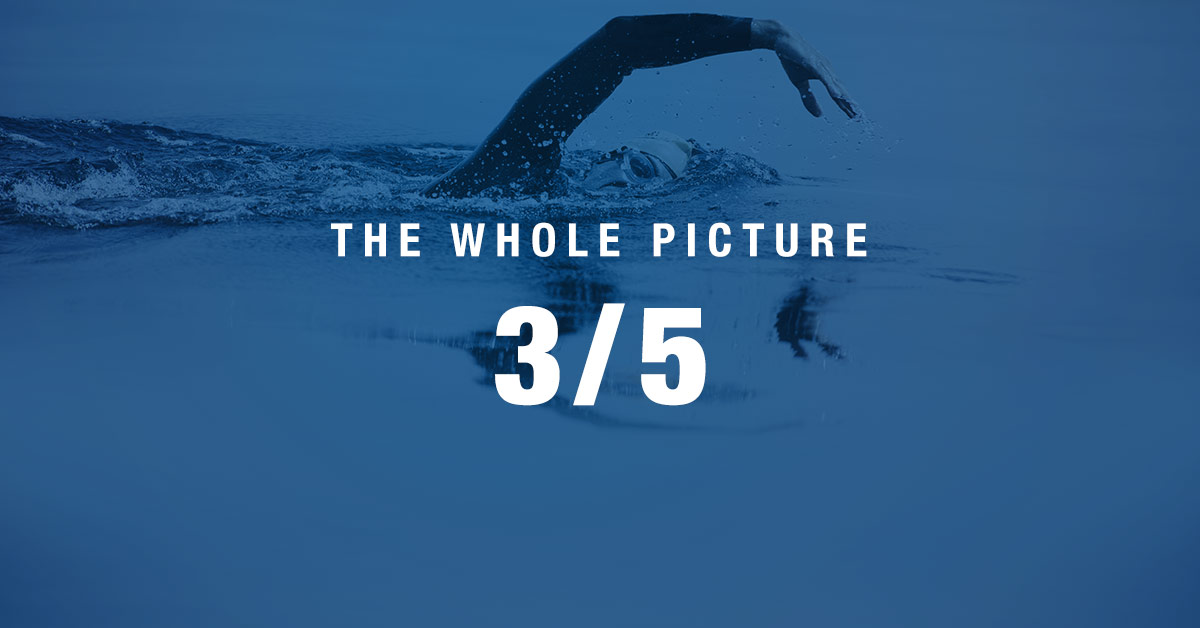This is Part Three of a five-part series on total load, the cumulative training and life stress an athlete experiences while training. Read Part One and Part T
It may come as a surprise to many people (it did to me), that unless you are a professional athlete looked after by experts who are minimizing all the non-training sources of stress in your life, that training is rarely the largest component of total load. Assuming that you eat and sleep reasonably well (we will cover those later in the series), then mental stress is quite likely to be your largest stressor.
A study published in 2010 tracked the occurrence of illness, injury, and burnout amongst 30 well-trained triathletes during a full competitive season in Western Australia. Although training factors had a
To quantify the effects further, a 2012 study on 44 healthy adults in Finland looked at the baseline psychological stress during a short two-week intensive training program. Subjects rated their stress from one (low psychological resources and a lot of stressors in my life) to ten (high psychological resources and no stressors in my life) during the program.
They found that those with high levels of stress showed almost no increase in maximum cycling power over the two weeks compared to up to 19 percent power increases for those experiencing the lowest levels of life stress. Other studies have shown reduced running economy following stressful life events which implies the possibility of impaired motor coordination.
So, why is this?
It is well known in medical circles that high levels of mental stress delay recovery in wound healing and operations, but what about endurance sports?
In his thought-provoking review of Periodisation Theory, Professor John Kiely not only identifies links between high levels of mental stress and poor response to training, but also teases out three separate components that contribute to this:
- Stress history
- High levels of mental/emotional stress in daily life
- Low levels of resilience or resistance to mental stress
Kiely summarizes that multiple sources of life stress down regulate the immune system, motor coordination, mood, and hormonal health leading to impaired performance, adaptation, and recovery, and increased levels of illness and injury.
Measuring and improving mental stress levels
Considering the fact that our busy lives feel increasing stressful, this paints a bleak picture for our training prospects. In fact, there is quite a lot we can do to reduce stress, starting with measurement.
Although no “gold standard” measurement of stress has been agreed upon, we can start by using visual scales to quantify our daily levels of mood, anxiety, fatigue, and enthusiasm for training. The example below is a simple way to measure the feelings an athlete might be having about their stress levels.
Kiely proposes that since the autonomic nervous system is a major regulator of our emotional state, Heart Rate Variability (HRV) can be a useful indicator of mental stress levels. This is because the sympathetic branch is associated with increasing levels of anxiety (fight or flight), and the parasympathetic branch makes us feel more calm and relaxed (rest and digest).
Increased baseline levels of HRV are associated not only with better athletic performance but with increased resilience and an ability to tolerate higher levels of individual stressors and total load.
You can find some tips on reducing workplace stress here, but it is also important to realize that the stress we experience is the difference between our expectations and our own perception of our ability to cope with those stresses. Therefore, we can also reduce the stress we experience by using techniques such as positive reframing, mindfulness, and slow deep breathing to increase our ability to cope with sources of stress.
Personally, I improved my HRV the most over the past ten years from using a paced breathing app called BreatheSync for a few minutes every morning and during the day as needed. I’m a big fan of guided meditation apps for maintaining a near constant level of calmness despite life’s inevitable ups and downs.
References:
- J Sports Med Phys Fitness. 2010 Dec;50(4):475-85. Training patterns and negative health outcomes in triathlon: longitudinal observations across a full competitive season. Main LC1, Landers GJ, Grove JR, Dawson B, Goodman C.
- Ruuska PS, Hautala AJ, Kiviniemi AM, Mäkikallio TH and Tulppo MP (2012) Self-rated mental stress and exercise training response in healthy subjects. Front. Physio. 3:51. doi: 10.3389/fphys.2012.00051
- Kiely, J. Sports Med (2018) 48: 753. https://doi.org/10.1007/s40279-017-0823-y



